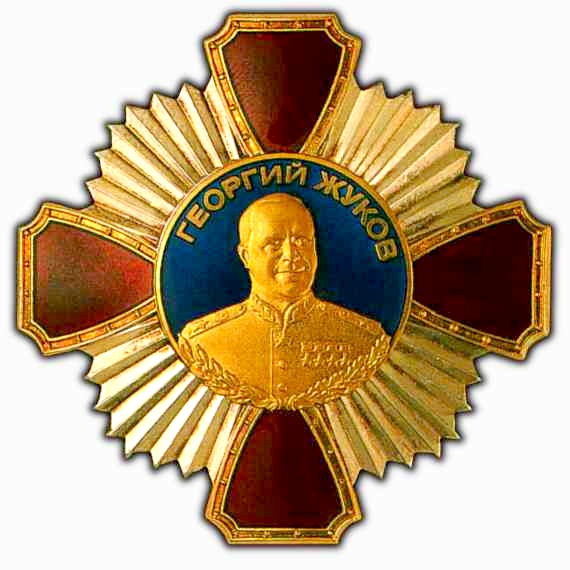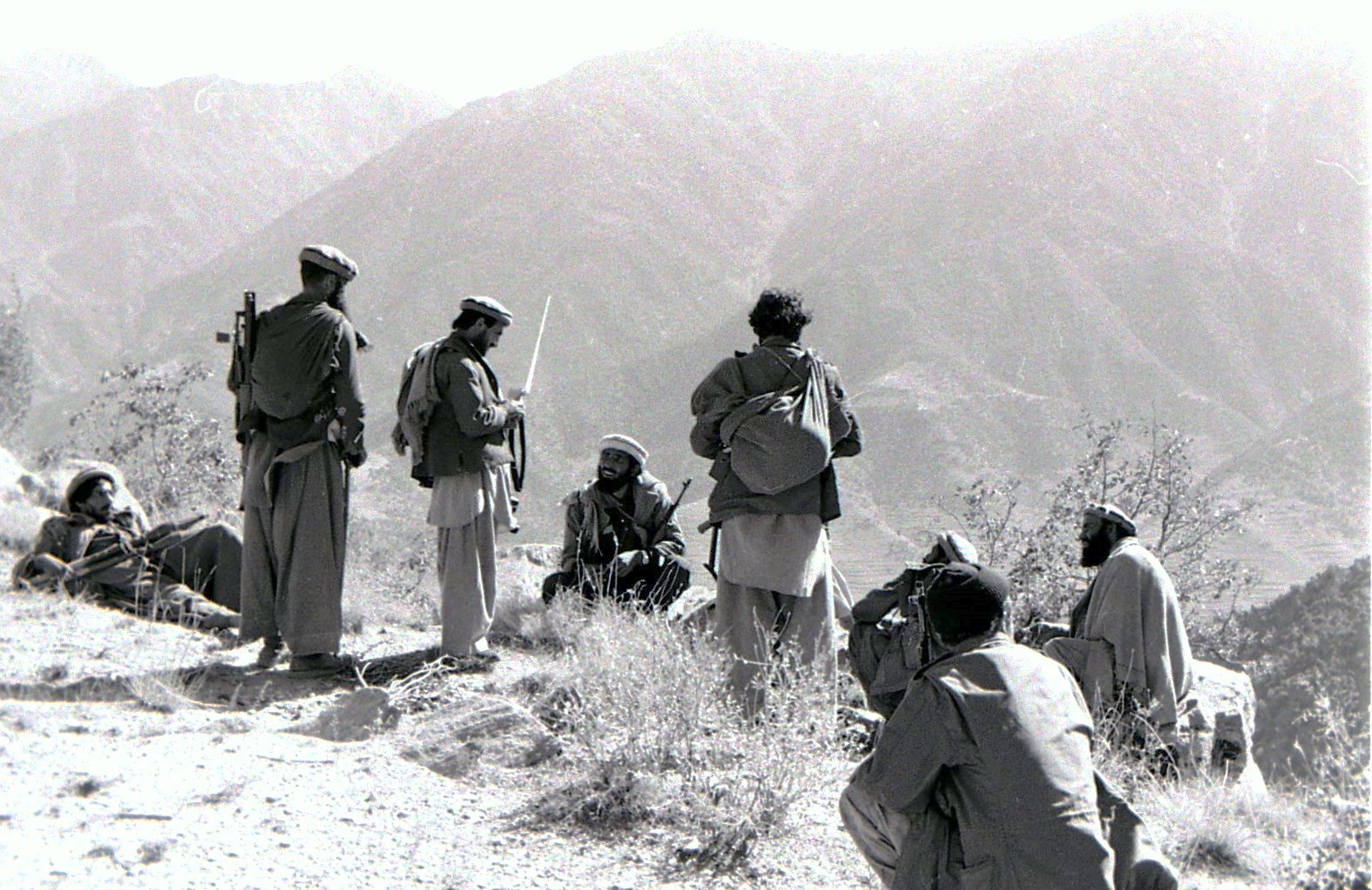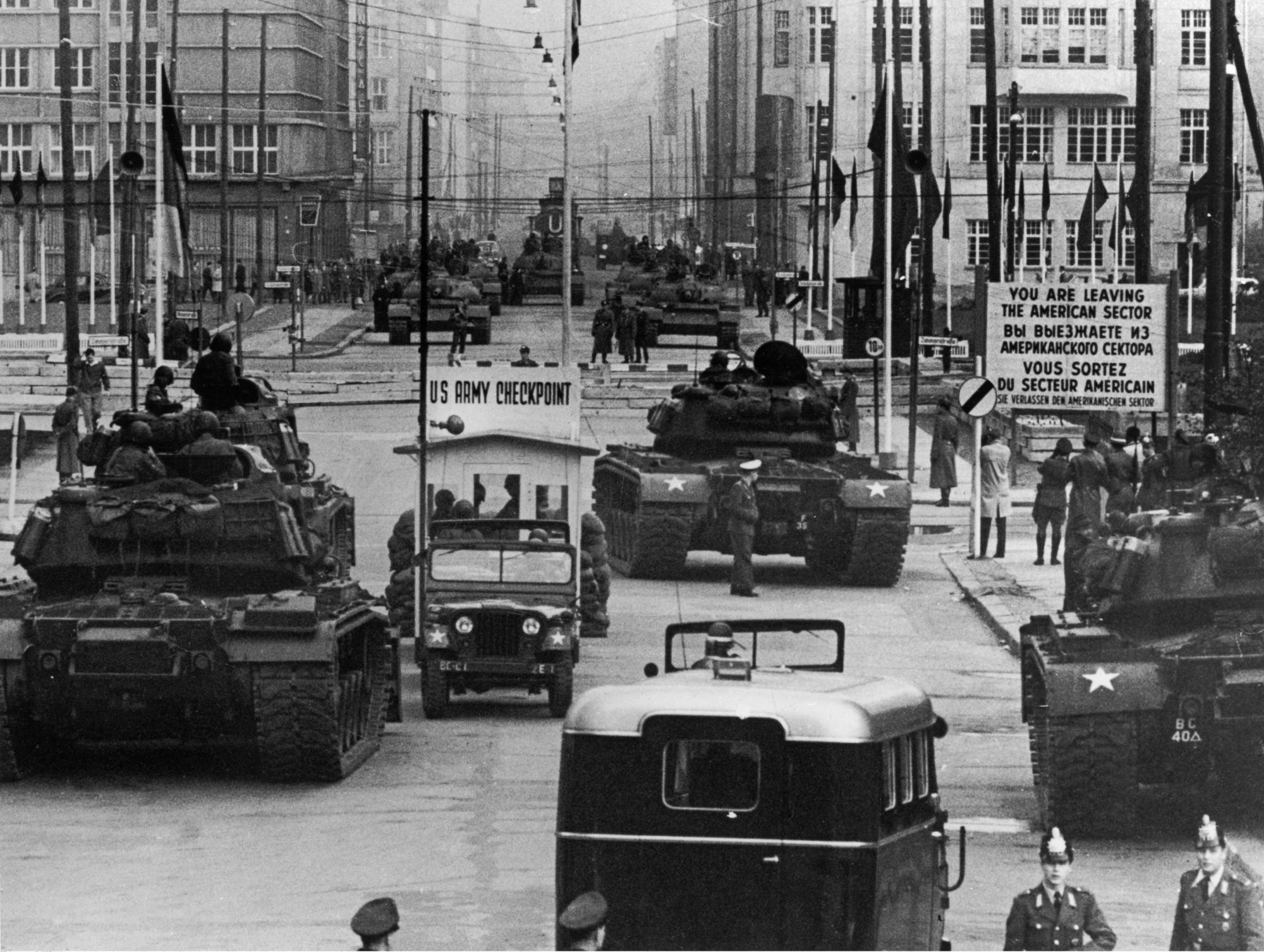|
Yazov
Dmitry Timofeyevich Yazov (russian: Дми́трий Тимофе́евич Я́зов; 8 November 1924 – 25 February 2020) was a Marshal of the Soviet Union. A veteran of the Great Patriotic War, Yazov served as Minister of Defence from 1987 until he was arrested for his part in the 1991 August Coup, four months before the fall of the Soviet Union. Yazov was the last person to be appointed to the rank of Marshal of the Soviet Union on 28 April 1990, the only Marshal born in Siberia, and at the time of his death on 25 February 2020, he was the last living Marshal of the Soviet Union. Biography Early life He was born in the village of Yazovo, Krestinsky volost, Kalachinsky district, Omsk province. He was the son of Timofey Yakovlevich Yazov (died in 1933) and Maria Fedoseevna Yazova, who were both peasants. The family had four children. World War II Yazov joined the Red Army voluntarily in November 1941, a seventeen-year-old young man, not having time to finish high school. ... [...More Info...] [...Related Items...] OR: [Wikipedia] [Google] [Baidu] |
Marshal Of The Soviet Union
Marshal of the Soviet Union (russian: Маршал Советского Союза, Marshal sovetskogo soyuza, ) was the highest military rank of the Soviet Union. The rank of Marshal of the Soviet Union was created in 1935 and abolished in 1991 when the Soviet Union dissolved. Forty-one people held this rank. The equivalent naval rank was until 1955 admiral of the fleet and from 1955 Admiral of the Fleet of the Soviet Union. While the supreme rank of Generalissimus of the Soviet Union, which would have been senior to Marshal of the Soviet Union, was proposed for Joseph Stalin after the Second World War, it was never officially approved. History of the rank The military rank of Marshal of the Soviet Union was established by a decree of the Soviet Cabinet, the Council of People's Commissars (Sovnarkom), on 22 September 1935. On 20 November, the rank was conferred on five people: People's Commissar of Defence and veteran Bolshevik Kliment Voroshilov, Chief of the General St ... [...More Info...] [...Related Items...] OR: [Wikipedia] [Google] [Baidu] |
Minister Of Defence (Soviet Union)
The Minister of Defence of the Soviet Union refers to the head of the Ministry of Defence who was responsible for defence of the socialist Russian Soviet Federative Socialist Republic from 1917 to 1922 and the Soviet Union from 1922 to 1992. People's Commissars for Military and Naval Affairs (1917–1934) People's Commissar for the Armed Forces (1946) Ministers of the Armed Forces (1946–1950) Ministers of Defence (1953–1992) See also * College of War * Ministry of War of the Russian Empire * List of heads of the military of Imperial Russia * Ministry of Defense (Soviet Union) * Ministry of Defense Industry (Soviet Union) * Ministry of Defence (Russia) * General Staff of the Armed Forces of the Russian Federation The General Staff of the Armed Forces of the Russian Federation (russian: Генеральный штаб Вооружённых сил Российской Федерации, General'nyy shtab Vooruzhonnykh sil Rossiyskoy F ... [...More Info...] [...Related Items...] OR: [Wikipedia] [Google] [Baidu] |
Moscow Higher Military Command School
The Moscow Higher Combined Arms Command School ''"Supreme Soviet of the RSFSR"'' (abbreviated to MVOKU) is a higher military educational institution of the Russian Armed Forces. History The school was formed in December 15, 1917 (O.S., December 28 N.S.), by order of Vladimir Lenin as the ''1st Moscow revolutionary machine gun officers school''. It later became the ''1st Moscow Machine Gunners' Officers Course'' and "WPRA 1st Soviet Higher Military School '' All-Russian Central Executive Committee''". In 1938 it received the first of its three order medals, the Order of the Red Banner, as a result of its Corps of Cadets and some alumni of the school who fought the Battle of Khalkhin Gol. During the Second World War, on the Eastern Front, cadets and faculty at the school contributed to the defense of the Moscow Region and the city itself. Many of its cadets and alumni later received state medals and decorations (several were awarded posthumously). In October 1941, the school was ... [...More Info...] [...Related Items...] OR: [Wikipedia] [Google] [Baidu] |
Dissolution Of The Soviet Union
The dissolution of the Soviet Union, also negatively connoted as rus, Разва́л Сове́тского Сою́за, r=Razvál Sovétskogo Soyúza, ''Ruining of the Soviet Union''. was the process of internal disintegration within the Soviet Union (USSR) which resulted in the end of the country's and its federal government's existence as a sovereign state, thereby resulting in its constituent republics gaining full sovereignty on 26 December 1991. It brought an end to General Secretary Mikhail Gorbachev's (later also President) effort to reform the Soviet political and economic system in an attempt to stop a period of political stalemate and economic backslide. The Soviet Union had experienced internal stagnation and ethnic separatism. Although highly centralized until its final years, the country was made up of fifteen top-level republics that served as homelands for different ethnicities. By late 1991, amid a catastrophic political crisis, with several republics alre ... [...More Info...] [...Related Items...] OR: [Wikipedia] [Google] [Baidu] |
Soviet–Afghan War
The Soviet–Afghan War was a protracted armed conflict fought in the Democratic Republic of Afghanistan from 1979 to 1989. It saw extensive fighting between the Soviet Union and the Afghan mujahideen (alongside smaller groups of anti-Soviet Maoism, Maoists) after the former militarily intervened in, or launched an invasion of, Afghanistan to support the local pro-Soviet government that had been installed during Operation Storm-333. Most combat operations against the mujahideen took place in the Afghan countryside, as the country's urbanized areas were entirely under Soviet control. While the mujahideen were backed by various countries and organizations, the majority of their support came from Pakistan, Saudi Arabia, the United States, the United Kingdom, China, and Iran; the American pro-mujahideen stance coincided with a sharp increase in bilateral hostilities with the Soviets during the Cold War (1979–1985), Cold War. The conflict led to the deaths of between 562,000 and ... [...More Info...] [...Related Items...] OR: [Wikipedia] [Google] [Baidu] |
Yevgeny Shaposhnikov
Yevgeny Ivanovich Shaposhnikov (russian: Евгений Иванович Шапошников; 3 February 1942 – 8 December 2020) was a Soviet and Russian military leader and business figure. He was awarded the rank of Marshal of Aviation in 1991. He was the final Minister of Defense of the Soviet Union. Early years Shaposhnikov was born on a farm near Aksay in Rostov Oblast, Russia. He graduated from the Kharkov Higher Military Aviation School in 1963 and the Gagarin Air Force Academy in 1969. Military career Shaposhnikov joined the Soviet Air Force and rose through the ranks. In 1987–1989, Yevgeny Shaposhnikov was the air force commander of the Group of Soviet Forces in Germany (16th Air Army?). In July 1990, he was appointed commander-in-chief of the Soviet Air Force. Political career Soviet Union In August 1991 – February 1992, Yevgeny Shaposhnikov held the post of Minister of Defence of Soviet Union (and thus the last Soviet Defence Minister). Recognized the B ... [...More Info...] [...Related Items...] OR: [Wikipedia] [Google] [Baidu] |
Valentin Pavlov
Valentin Sergeyevich Pavlov (russian: Валéнтин Серге́евич Па́влов; 27 September 1937 – 30 March 2003) was a Soviet official who became a Russian banker following the dissolution of the Soviet Union. Born in the city of Moscow, then part of the Russian Soviet Federative Socialist Republic, Pavlov began his political career in the Ministry of Finance in 1959. Later, during the Brezhnev Era, he became head of the Financial Department of the State Planning Committee. Pavlov was appointed to the post of Chairman of the State Committee on Prices during the Gorbachev Era, and later became Minister of Finance in Nikolai Ryzhkov's second government. He went on to succeed Ryzhkov as head of government in the newly established post of Prime Minister of the Soviet Union. As Prime Minister Pavlov initiated the 1991 Soviet monetary reform, commonly referred to as the Pavlov reform, in early 1991. Early on he told the media that the reform was initiated to hal ... [...More Info...] [...Related Items...] OR: [Wikipedia] [Google] [Baidu] |
Sergei Sokolov (Marshal)
Sergey Leonidovich Sokolov (russian: Серге́й Леони́дович Соколо́в; 1 July 191131 August 2012) was a Soviet military commander, Hero of the Soviet Union, and served as Minister of Defence of the Soviet Union from 22 December 1984 until 29 May 1987. Biography The son of an Imperial Russian army officer, Sokolov served in the Battle of Lake Khasan during the Soviet-Japanese Border Wars and also fought against Nazi Germany during World War II. He was Commander of the Leningrad Military District from 1965 to 1967 and First Deputy Defense Minister from 1967 to 1984. Sokolov was promoted to Marshal of the Soviet Union in 1978. He was in charge of Soviet ground forces during the Soviet invasion of Afghanistan. He personally led the main Soviet incursion of ground forces on December 27, 1979. His actions and command strategies during the war made him one of the Soviet Union's most respected Marshals. On April 28, 1980 he was awarded the title Hero of the Sovi ... [...More Info...] [...Related Items...] OR: [Wikipedia] [Google] [Baidu] |
Federal Military Memorial Cemetery
The Federal Military Memorial Cemetery (Russian: Федеральное военное мемориальное кладбище) is a national cemetery of Russia, located in Mytishchinsky District, Moscow Oblast, on the north-eastern outskirts of Moscow. The cemetery was built as the new burial place for national dignitaries to replace the Kremlin Wall Necropolis, where burials ceased after 1985, and was opened with its inaugural burial on 21 June 2013. History The first decision to establish a national cemetery was adopted in 1953, as a resolution of the USSR Council of Ministers, but the project was never implemented. The burial of national dignitaries irregularly took place at the Kremlin Wall Necropolis in Red Square, Moscow, ending with the funeral of Soviet General Secretary Konstantin Chernenko in March 1985. After the fall of the Soviet Union in 1991, there were plans to relocate the Kremlin Wall Necropolis, since it ruins the old style of the Moscow Kremlin. The concept ... [...More Info...] [...Related Items...] OR: [Wikipedia] [Google] [Baidu] |
Soviet Army
uk, Радянська армія , image = File:Communist star with golden border and red rims.svg , alt = , caption = Emblem of the Soviet Army , start_date = 25 February 1946 , country = (1946–1991)' (1991–1992) , branch = , type = Army , role = Ground warfare, Land warfare , size = 3,668,075 active (1991) 4,129,506 reserve (1991) , command_structure = , garrison = , garrison_label = , nickname = "Red Army" , patron = , motto = ''За нашу Советскую Родину!(Za nashu Sovetskuyu Rodinu!)''"For our Soviet Motherland!" , colors = Red and yellow , colors_label = , march ... [...More Info...] [...Related Items...] OR: [Wikipedia] [Google] [Baidu] |
Дмитрий Язов в 1941 году
Dmitri (russian: Дми́трий); Church Slavic form: Dimitry or Dimitri (); ancient Russian forms: D'mitriy or Dmitr ( or ) is a male given name common in Orthodox Christian culture, the Russian version of Greek Demetrios (Δημήτριος ''Dēmētrios'' ). The meaning of the name is "devoted to, dedicated to, or follower of Demeter" (Δημήτηρ, ''Dēmētēr''), "mother-earth", the Greek goddess of agriculture. Short forms of the name from the 13th–14th centuries are Mit, Mitya, Mityay, Mit'ka or Miten'ka (, or ); from the 20th century (originated from the Church Slavic form) are Dima, Dimka, Dimochka, Dimulya, Dimusha etc. (, etc.) St. Dimitri's Day The feast of the martyr Saint Demetrius of Thessalonica is celebrated on Saturday before November 8 ld Style October 26 The name day (именины): October 26 (November 8 on the Julian Calendar) See also: Eastern Orthodox liturgical calendar. The Saturday before October 26/November 8 is called Demetrius Saturd ... [...More Info...] [...Related Items...] OR: [Wikipedia] [Google] [Baidu] |
Leningrad Front
The Leningrad Front (russian: Ленинградский фронт) was formed during the 1941 German approach on Leningrad (now Saint Petersburg) by dividing the Northern Front into the Leningrad Front and Karelian Front The Karelian Front russian: Карельский фронт) was a front (a formation of Army Group size) of the Soviet Union's Red Army during World War II, and operated in Karelia. Wartime The Karelian Front was created in August 1941 when ... on August 27, 1941. History The Leningrad Front was immediately given the task of containing the German drive towards Leningrad and defending the city from the approaching Army Group North. By September 1941, German forces to the south were effectively stopped on the outskirts of Leningrad, initiating the two-and-a-half-year-long siege of Leningrad. Although Finnish Army, Finnish forces to the north stopped at the old Finnish–Soviet border, the Leningrad front suffered severe losses on the Continuation War, F ... [...More Info...] [...Related Items...] OR: [Wikipedia] [Google] [Baidu] |



.jpg)



